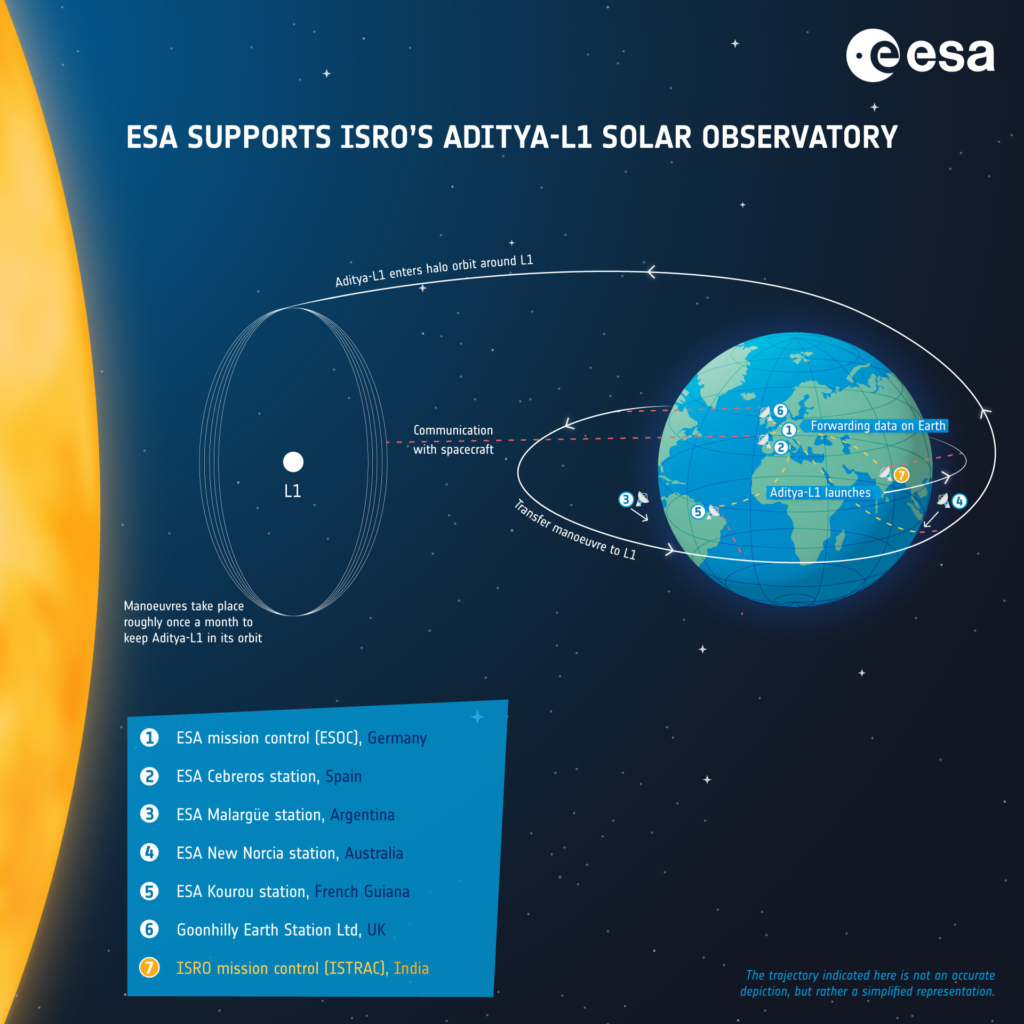Introduction
In the vast expanse of our universe, the study of the Sun remains one of the most intriguing and crucial endeavors for scientists. Understanding our nearest star not only sheds light on the mysteries of our solar system but also helps us comprehend the broader cosmic processes that affect our planet. The Aditya-L1 mission, India’s ambitious attempt to explore the Sun, has taken its first significant step towards this goal with its successful Earth-bound maneuver, positioning the spacecraft in a unique orbit. This article delves into the details of this milestone, providing insights into the Aditya-L1 mission and its objectives.

The Aditya-L1 Mission: A Brief Overview
1. Unveiling Aditya-L1’s Purpose
The Aditya-L1 mission, named after the sun god Aditya in Hindu mythology, aims to study the Sun’s outermost layer, the corona. This layer of the Sun is particularly intriguing because it exhibits unusual phenomena like solar flares and coronal mass ejections, which can have a profound impact on Earth.
2. ISRO’s Commitment to Space Exploration – Aditya-L1
Launched by the Indian Space Research Organisation (ISRO), Aditya-L1 is a testament to India’s growing presence in the field of space exploration. The mission reflects ISRO’s commitment to advancing scientific research and space technology.
3. Collaborative Efforts
Aditya-L1 is not a solo venture. It’s part of a broader international effort to better understand the Sun and its influence on our planet. Collaborations with global space agencies ensure that the mission benefits from a diverse range of expertise and resources.
The Earth-bound Maneuver – Aditya-L1
4. A Successful Start
On [date], Aditya-L1 marked a significant milestone by executing its first Earth-bound maneuver flawlessly. This maneuver placed the spacecraft in a precise orbit of 245 kilometers by 22,459 kilometers.
5. Importance of the Maneuver
The Earth-bound maneuver is a critical step in the Aditya-L1 mission. It positions the spacecraft optimally to study the Sun and its corona. The chosen orbit offers a unique vantage point, providing valuable data that would be challenging to obtain from other locations.
6. Engineering Marvel
The successful execution of this maneuver showcases the remarkable engineering prowess of ISRO and its ability to carry out complex space missions with precision.
Aditya-L1’s Scientific Objectives
7. Unraveling Solar Mysteries
Aditya-L1’s primary objective is to unravel the mysteries of the Sun’s corona. By studying solar phenomena up close, scientists hope to gain insights into the Sun’s behavior and its impact on space weather, including its effects on Earth.
8. Predicting Solar Activity
Understanding the Sun’s behavior is crucial for predicting solar activity, such as solar storms, which can disrupt communication systems and power grids on Earth. Aditya-L1’s data will contribute to more accurate predictions and better preparedness.
Conclusion
The successful Earth-bound maneuver of Aditya-L1 marks a promising beginning for this ambitious mission. As the spacecraft settles into its unique orbit, it is poised to provide valuable insights into the Sun’s corona and enhance our understanding of space weather. ISRO’s commitment to scientific exploration and international collaboration ensures that Aditya-L1 will continue to make significant contributions to solar research.
FAQs
1. When was the Aditya-L1 mission launched?
The Aditya-L1 mission was launched on [launch date], marking the beginning of its journey to study the Sun’s corona.
2. How does Aditya-L1’s orbit differ from previous missions?
Aditya-L1’s orbit, following its Earth-bound maneuver, is uniquely positioned at 245 kilometers by 22,459 kilometers, allowing for close-up observations of the Sun’s corona.
3. What is the significance of studying the Sun’s corona?
The Sun’s corona holds the key to understanding solar phenomena like solar flares and coronal mass ejections, which can impact Earth’s space weather and technology.
4. How does Aditya-L1 contribute to space weather prediction?
Aditya-L1’s data will enhance our ability to predict solar activity, enabling better preparedness for potential disruptions caused by solar storms.
5. What role does international collaboration play in the Aditya-L1 mission?
International collaboration brings together diverse expertise and resources, enriching the mission’s scientific endeavors and success.

